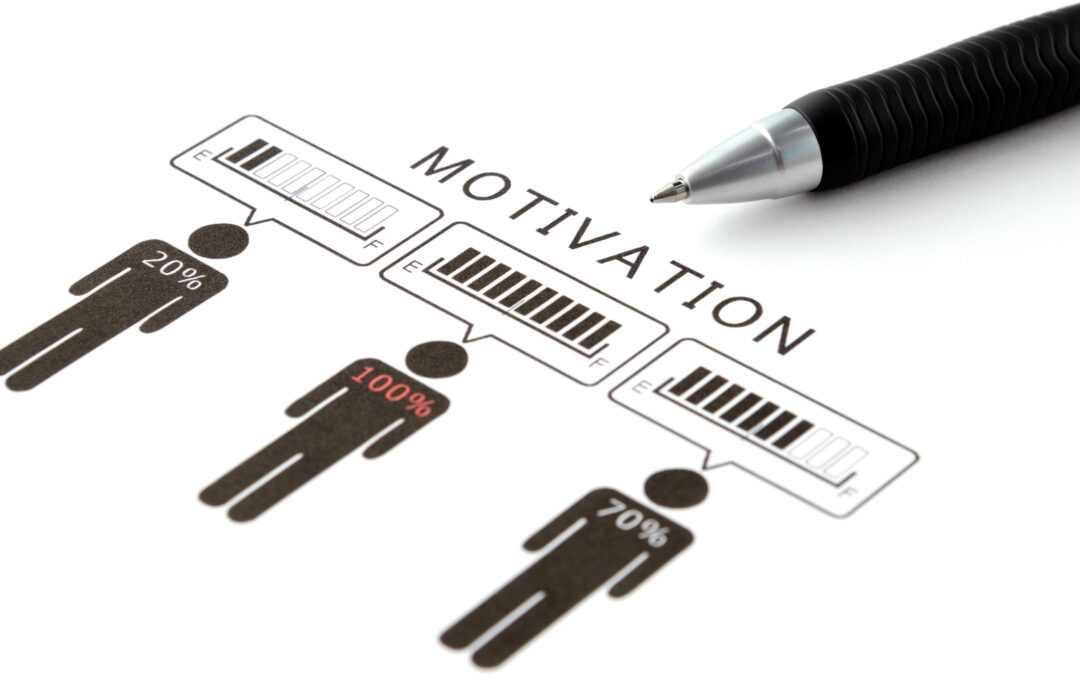
by Ericka Martin, LMHC, LPC | CBT, Self Acceptance, Self Worth
When was the last time you heard from your inner critic? You know, that voice in your head that constantly judges you, puts you down and compares you to others. The one that tells you you’re not good enough or smart enough and says things you would never dream of saying to another person.
Now you may think this inner critic, while annoying, is relatively harmless. But this is simply not the case. This inner critical voice limits you and stops you from living the life you truly desire. It hinders your emotional well-being and, if left unchecked, can even lead to depression or anxiety.
Here are some ways you can silence that inner critic and stop beating yourself up.
-
Give it Attention
That’s right, in order to gain control over your inner critic you have to know that it exists. Most of our thinking is automatic. In other words, we don’t give our thoughts much thought. We barely notice a critical thought has passed. Give attention to your thoughts, all of them. This will help you recognize the critical voice.
Here are some emotional clues the critic has reared its ugly head: whenever you feel doubt, guilt, shame, and worthlessness. These are almost always signs of the critic at work.
-
Separate Yourself from Your Inner Critic
Your inner critic is like a parasite, feeding off you. You were not born with this parasite but acquired it along the way. Your inner critic hopes it can hide and blend in, and that you’ll think ITS thoughts are your own.
You have to separate yourself from this parasite. One way to do that is to give your critic a name. Have fun with this naming. You could call your inner critic anything from “Todd” to “Miss. Annoying Loudmouth.” It doesn’t matter.
What matters is that you learn to separate it from your authentic self.
-
Talk Back
In order to take the power away from your inner critic, you’ve got to give it a taste of its own medicine. As soon as you recognize your inner critic is speaking to you, tell it to shut up. Tell it that the jig is up, that you know it is a big, fat liar, and that you want it to go away. If you want to really make this voice recoil, tell it you are choosing to be kind to yourself from now on. A counselor can help you learn to talk back powerfully using strategies like Cognitive Behavioral Therapy (CBT).
Self-compassion to an inner critic is like garlic to a vampire.
-
Create a New Inner Voice
If you want to defeat an enemy, you need to have a powerful ally on your side. It’s important at this juncture to create an even more powerful inner voice. One that is on your side and acts as your BFF.
To create this new voice, start noticing the good things about yourself. No matter what that nasty critic said about you, the truth is you have fantastic traits and abilities. Start focusing on those. Yes, it will be hard at first to let yourself see you in a positive light, but the more you do it, the easier it will get.
Life is short. To have the most fulfilling one possible, we have to stop wasting time on beating ourselves up. Take these 4 steps and learn to quiet that inner critic. Your best you is waiting to be celebrated.
Some people’s inner critic is stronger than others. Sometimes the greatest ally you can have in your corner is an impartial third-party, a therapist who can see you for who you really are.
If you or a loved one could use some help defeating your inner critic and would like to explore therapy, get in touch with a counselor on our team. We would be happy to speak with you about how we might be able to help.

by Ericka Martin, LMHC, LPC | CBT
Are you interested in learning more about Cognitive-Behavioral Therapy as a mode of counseling or self-help? Check out these 7 amazing online resources:
- https://llttf.com/ Living Life to the Full
Living Life to the Full is an interactive CBT website. This free online course incorporates audio and video clips throughout the learning modules. The site includes handouts for each course topic, a moderated discussion forum, assessments tools to track progress, and an array of other self-help materials. Users can also invite a mental health practitioner to view your progress and provide feedback.
- http://www.cci.health.wa.gov.au/ Centre for Clinical Interventions
The Centre for Clinical Interventions provides information on struggles (ex. Anxiety, Assertiveness, Depression, Panic, Perfectionism, Sleep, etc.) and gives access to free downloadable workbooks, customized to that area. Each topic includes 7-12 user-friendly chapters. It is an instantly practical resource. Click on “Resources” and “Looking After Yourself” to find the resource best suited to your needs.
- http://www.suffolkcognitivetherapy.com/web/resources/worksheets/ Suffolk Cognitive Therapy
This website provides free audio recordings of mindfulness instruction, including “Progressive Muscle Relaxation,” “Watching Thoughts Drift By,” “Acceptance of Anxiety,” and “Acceptance of Thoughts and Feelings.” They also provide clinical forms for practicing cognitive therapy, including a Thought Record, an Objective Thought Exercise & Worksheet, and a Values Exploration Worksheet.
- https://www.academyofct.org Academy of Cognitive Therapy
The Academy of Cognitive Therapy shares CBT outcome studies, describing conditions that are treatable with CBT, including a spectrum of anxiety and mood disorders, eating disorders, and a surprising amount of medically related disorders (including insomnia, IBS, chronic fatigue, and chronic pain).
- http://threeminutetherapy.com/ Three Minute Therapy
This website has an entire book online, free of cost. The book is “Three Minute Therapy: Change Your Thinking, Change Your Life” by Dr. Michael Edelstein. The book includes an explanation of cognitive therapy, CBT applications for a variety of topics (i.e. worry, self-esteem, anger, and overeating), and a three-minute exercise that walks users through the A-B-C-D-E-F approach to cognitive re-framing.
- http://www.rebtnetwork.org/ REBT Network
The REBT Network elaborates on Albert Ellis’ ABC Model of rational-emotive-behavioral therapy, explaining how beliefs are connected to our emotional and behavioral reactions. This website also includes forms for disputing irrational beliefs and walking yourself through REBT therapy. You can also download free copies of “How to Conquer Your Frustrations” by Dr. William J. Knaus and “Rational Emotive Education” by William J. Knaus.
- https://moodgym.com.au/ Mood Gym
Mood Gym is an interactive website that uses cognitive therapy to treat depression or anxiety. This low-cost site ($28.15 annual fee) incorporates quizzes, worksheets, animated demonstrations, and skill building into its program. It also tracks your progress through the workbook and helps you measure your results.

by Ericka Martin, LMHC, LPC | CBT, Counseling
Have you ever wondered how your feelings are generated? Do you understand what it is that triggers your emotions?
The fact is, there are many different answers to these questions in the field of psychology. Let’s take a look at just one of those approaches from the world of cognitive therapy. Cognitive-behavioral therapy (CBT) teaches that all moods are generated by our thoughts and reinforced by our behaviors.
Most thoughts that occur in the heat of an emotional moment are automatic. Often, these thoughts occur spontaneously, without conscious intent; hence the term “automatic.” Thoughts that are skewed negatively can lead to amplified emotional pain (ex. Sadness, anger, anxiety, or hopelessness), which is often what prompts people to come to counseling to begin with.
A cognitive approach to counseling helps people with uncovering and re-framing negative thoughts with the assumption that changing these thoughts changes the intensity of the feelings.
What happens in cognitive therapy?
- A counselor that uses cognitive therapy or CBT might start by asking you to describe the context in which particularly strong feelings are being triggered. What is happening? Where are you? Who are you with? What happened first?
- The counselor might prompt you to name the different emotions happening in that specific situation. Sometimes there is more than one emotion happening at the same time. You might even rate the intensity of the feelings (Example: Shame 90%; Anxiety 55%).
- A cognitive counselor will be especially interested in helping you identify the automatic thoughts that happened before, during, or after the situation you’re discussing. To help with this, they might ask questions like: What was running through your mind when you started feeling ashamed/anxious/sad/guilty? Sometimes there are several automatic thoughts related to a particular situation. Maybe you’ve experienced a flood of negative thoughts one after another. Sometimes thoughts can swirl around so quickly that they feel like a hurricane of negativity. When that happens, the therapist can help you address them one at a time. You might start with the thought that evokes the most painful or intense emotions.
- You might be asked to identify and confront any distortions in your thought process. For example, noticing thoughts that are all-or-nothing, overly catastrophic, attempt to tell the future, attempt to read someone’s mind, or overly personalize things.
- You might be asked to examine evidence that your automatic thought is not 100% true. The workbook, “Mind Over Mood,” has a wonderful Thought Record worksheet that can help with challenging those emotionally heated thoughts.
- After examining the thought (and the evidence for/against the thought), you might be asked to try out a new thought. The new thought might not be all rainbows, unicorns, and false positivity. Instead, the new thought might be experienced as neutral, balanced, fair, and more reflective of a truth apart from emotional reasoning.
- After trying out the new line of thinking, a cognitive counselor might check in to see how the intensity of the emotions changed as a result of changing thinking.
- Perhaps, then, you might begin to explore how you would behave differently if the new thought were to take root.
Cognitive theory teaches that long-term thought change requires a re-examination of core beliefs.
After evaluating automatic thoughts over a period of time, many people find patterns in their thinking that reflect deeper beliefs that are at the center of their distress. Once exposed, you can dispute those beliefs and act against them. This is when “schema” change takes place. According to Dobson & Shaw (1995), cognitive schemas reside in the long-term memory, serving as a “vulnerability factor” for their negative thinking. In order for enduring change to take place, individuals must create new lenses from which to see themselves, others, and their environment.
Cognitive counseling helps people develop an awareness of the unhelpful thoughts that are contributing to intense feelings. People really can learn to replace destructive thoughts with more functional thinking. In cognitive therapy, there is hope for a new perspective on life.
Interested in learning more? Check out the resources listed below or read additional articles on our Cognitive Behavioral Therapy page.
References
Burns, D. (1980). Feeling Good. New York: Signet.
Dobson, K. & Shaw, B. (1995). Cognitive therapies in practice. Comprehensive Textbook of Psychotherapy: Theory and Practice. New York: Oxford University Press.
Dozios, D., et al (2009). Changes in self-schema structure in cognitive therapy for major depressive disorder: A randomized clinical trial. Journal of Consulting and Clinical Psychology, 77 (6).
Froggatt, W. (2005). A brief introduction to rational emotive behaviour therapy. Handout.
Greenberger, D. & Padesky, C. (1995). Mind Over Mood: Change How You Feel by Changing the Way You Think. New York: Guilford Press.
Jones, S. & Butman, R. Modern Psychotherapies: A Comprehensive Christian Appraisal. Illinois: InterVarsity Press.
Wenzel, A, et al (2009). Cognitive Therapy for Suicidal Patients. Chapter: Cognitive therapy: General principles. Washington, DC: American Psychological Association.

by Ericka Martin, LMHC, LPC | CBT, Coping
Imagine for a moment that the negative thoughts running wild in your brain played like a country song on repeat.
Would any of the songs have titles like these?
- “She Don’t Think My Beard Is Sexy”
- “All Alone Again (In My Truck)”
- “My Guitar Only Has Three Strings”
- “My Love (and My Tractor’s) Tank Are Outta Gas”
- “The Short End of the Stick (Life Ain’t Fair)”
- “Failing Like Roadkill”
- “Little Doggie, I’m So Miserable Without You”
- “Stuck in This Here Town”
- “Like Me Please, ‘Cuz I Don’t Like Myself”
- “What I Want Don’t Matter (All I Want Is a New Rig)”
- “Stop Feeling That Feeling I Feel”
- “Gotta Be Perfect (Hat, Boots, and All)”
- “Can’t Slow Down This Fast Train”
Unfortunately (or fortunately, depending on how much you like/dislike country music), negative thoughts don’t sound twangy, musical, or even remotely playful when they’re happening. Instead, they tend to evoke anxiety, sadness, disappointment, guilt, anger, or shame.
Like a good country song, however, our negative thoughts tend to have a repetitive “hook”–a chorus (or negative theme) that plays over and over again on repeat. Most of us aren’t super creative with our negative thoughts. They tend to be the same variations of ten (often much fewer) repetitious themes.
THE REALITY IS: We don’t have as much control over our thinking as some would like to believe. Most of us do not on-purpose sit there thinking, “Man, now would be a good time to think really crappy things about myself.” No, the thoughts just happen, all on their own. Often, the thoughts are on autopilot, automatic responses born out of habit, not intention.
What then can be done with negative thoughts? Here are two practical solutions:
- ENGAGE IN A FULL-ON RAP BATTLE WITH THE NEGATIVE THOUGHTS
Like a country song that exaggerates for dramatic effect, not all of the negative thoughts we experience are not fully accurate, truthful, or likely. It can be confusing, because in the moment, most of negative thoughts sound true and feel true. However, feeling something is true does not make that thought true. Emotionally-laden thoughts can be skewed toward the negative similar to how a fun-house mirror that takes the image of a person and distorts it grotesquely.
Listen to the lyrics of one verse of Hank Williams’ classic country song, “I’m So Lonesome I Could Cry:”
“I’ve never seen a night so long
When time goes crawling by
The moon just went behind the clouds
To hide its face and cry”
Most of our negative thoughts are not nearly so poetic; however, they do often apply similar distorted tactics– Generalization and Magnification. The feeling of loneliness is real, raw, and genuine. Though the feeling grows to new proportions when the thought is amplified to include something much broader; in this case–the whole world seems lonely (time, the moon, etc.). Do your negative thoughts do something like this? Do they:
- Overgeneralize: “always” or “never”
- Make Things Personal
- Magnify or Catastrophize
- Label: “stupid”, “lazy,” “ugly”
- Attempt to foresee the future (except in an apocalyptic, pessimistic way)
- Filter out the Positive
- Shame you for what you SHOULD be doing, but you’re NOT
If so, it might be time to sass those thoughts back like Kellie Pickler with thoughts that are more true, balanced, or at least neutral.
TIP: Don’t just let that negative thought on repeat have its way with you. Talk back! Engage those thoughts in a RAP BATTLE.
In a traditional rap battle (if something like that can be called “traditional”), rappers will take turns taking jabs at each other (in a rhyming fashion). You don’t need to be quite so creative. You can also hold back from belittling the negative thought like a rapper would. Instead, talk back to your negative thoughts with more accurate statements. Battle back with TRUTH. You might not be able to control the first thought that comes into your mind, but you do have some say over the second thought.
If you’d like help talking back to your chorus of negative thoughts, a counselor trained in Cognitive Behavioral Therapy (CBT) can help. There are also great books that can guide you, including “Mind Over Mood” by Dennis Greenberger and “Feeling Good” by David Burns.
2. THINK OF NEGATIVE THOUGHTS LIKE FAMILIAR ELEVATOR MUSIC & RELEGATE THEM TO THE BACKGROUND
What if we were to think of thoughts like country music playing in the background of an elevator. Just like with elevator music, you are not always the DJ controlling the content or volume of your thoughts. If you were the DJ, certainly you’d flip the “off” switch and opt for some silence! If your thoughts aren’t responding to the RAP BATTLE APPROACH described above, perhaps this next idea might be for you.
Try it: Write out a list of your most frequent negative thoughts. Group similar ones together. Is there as much variety as you were expecting? I bet you could make a playlist of your own that would be shorter than your average country music album. This approach to handling negative thoughts that comes from a therapeutic approach called Acceptance and Commitment Therapy (ACT).
If you experience the same negative thoughts, over and over, some of the best things you can do are:
- Recognize them (“Oh I’m having that thought again”)
- Name them (“That’s the ‘I’m a failure’ thought.”)
- Simply acknowledge that this is “a thing” your brain does in response to certain triggers.
- Allow the thought to just be a thought. Don’t give it power by digging deeper. Digging deeper = Looking for further evidence that the thoughts is true, wise, actionable, real.
- Don’t allow the thought to dictate your actions. You can hear the music playing in the background and still move forward toward your goals and act according to your values. Sometimes the volume of the negative thoughts is loud and distracting, sometimes attempting to demand your full attention. Nonetheless, negative thoughts do not have to define a person or their behaviors.
If your intrusive negative thoughts aren’t quite as fun as country music, a professional therapist may be able to help. The counselors at Star Meadow Counseling are trained in helping clients shift out of negative thought patterns. You don’t have to stay stuck on repeat.

by Ericka Martin | CBT, Depression, Motivation
It’s nearly New Year’s. This marks yet another year that we tell ourselves that it’s time to reset, refocus, and re-envision our lives the way they were “meant” to be—the way they “should” be. It’s time to get healthier, work harder (or slower), and match real life with the ideals that have thus far seemed out of reach. But does telling yourself that you “should” do something maintain your sense of motivation long-term? Or do you tend to burn out after a few weeks (or days) of good intentions? (more…)














